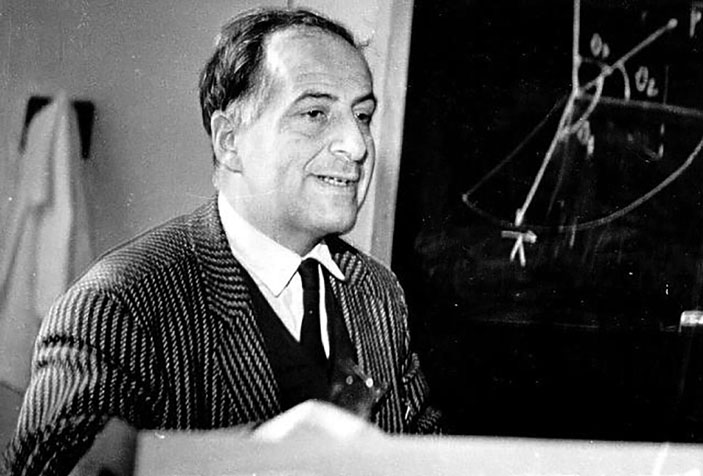In memory of Bruno Pontecorvo
News, 22 August 2021
On 22 August, the 108th anniversary of the birth of a world-class scientist, the founder of experimental neutrino physics, one of the founders of the Joint Institute for Nuclear Research Bruno Maksimovich Pontecorvo is celebrated. The JINR International Neutrino Physics School, the prize for scientists from different countries engaged in the fields of neutrino physics, and the scholarship for young researchers of the Institute are named after him. One of the streets of Dubna is named in his honour.
The Italian B. M. Pontecorvo found himself in the Soviet Union and, in particular, in Dubna due to his communist political views. Before his long-term work at JINR, he already had a big name in scientific circles: he was a student of Enrico Fermi at the University of Rome – working in his group, Pontecorvo co-authored the discovery of the neutron deceleration effect. Then he worked at the Radium Institute in the Laboratory of Irène and Frédéric Joliot-Curie in France, and studied nuclear isomerism, for which he received the Carnegie-Curie Prize. After that, he immigrated to the United States, worked in Canada, Great Britain. In America, B. M. Pontecorvo developed a geophysical method for studying oil wells using a neutron generator – neutron logging.
As an experimental physicist, a specialist in nuclear physics and elementary particle physics, the founder of high-energy neutrino physics, and one of the founders of neutrino astronomy, he left different scientific works on the deceleration of neutrons and their capture by atomic nuclei, neutrino physics, weak interactions, nuclear isomerism, astrophysics. He predicted the existence of isomeric states in stable atomic nuclei and discovered the phenomenon of nuclear phosphorescence. Mr Pontecorvo proposed a method for detecting neutrinos using the reaction of converting chlorine nuclei into radioactive argon nuclei. Such a field of science as neutrino astronomy was born and developed after carrying out this method. He put forward the idea of neutrino oscillation and pointed out the importance of the weak interaction between neutrinos and electrons for the evolution of stars.
Bruno Pontecorvo became the creator of the Soviet school of experiment in the fields of elementary particle physics. Today, three Nobel Prizes have been awarded for works performed using the ideas of Bruno Maksimovich.
In addition to science, sports was also his passion. Being a tennis champion of Italy in his adolescence, he continued to practice this sport in Dubna and was also an avid cyclist, he was fond of water skiing and spearfishing.
Speaking about their great colleague, contemporaries noted his constant politeness and attention to each person. He had the gift of charm, and, according to the memories of those who knew him, “every debate or seminar with his participation turned into a lively conversation.”
In 2013, the session of the Physical Sciences Department of the Russian Academy of Sciences (PSD RAS) dedicated to the 100th anniversary of the birth of B. M. Pontecorvo was held. At that session, RAS Academician V. A. Matveev, then the Director, and now the JINR Scientific Leader, concluded about B. M. Pontecorvo, “He left a deep mark on the scientific life of the Joint Institute, on the creative atmosphere we are proud of.”
